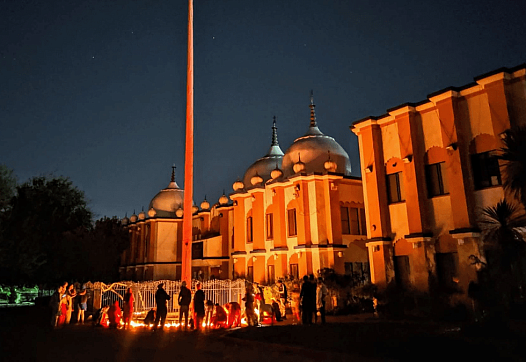What’s At Stake In The Battle To Keep ICE Out Of Gurdwaras
The story was originally published by the India Currents with support from our 2025 California Health Equity Fellowship.
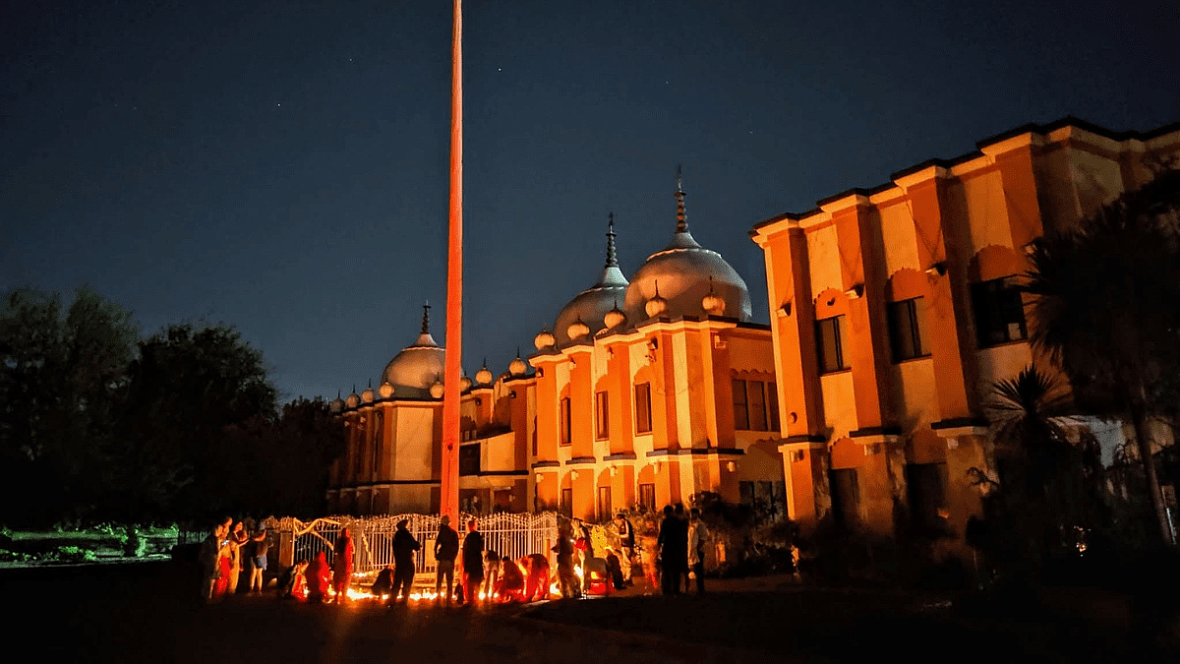
The West Sacramento Gurdwara was established in 1983.
Photo by Amar Shergill.
In 1988, Narinder Singh Thandi started working as a motor coach driver for Amtrak. He was the only Sikh working out of the Sacramento office. He drove for hours across California, shuttling from city to city, often alone. The job entailed irregular sleeping schedules and limited access to nutritious food, leading to sustained periods of mental stress when on the road.
One night, while driving an empty motorcoach in Southern California around Walnut, he saw the Nishaan Sahib — the Sikh religious flag — in the distance, appearing like a beacon to his weary mind and body. He turned the coach around and followed the Nishaan Sahib to a nearby gurdwara, where he offered prayers in the darbar sahib (congregation hall), ate daal chawal at the langar, and chatted with other Sikhs at the gurdwara before getting back on the road. That encounter set his mind at ease. “It made me feel so good because I spoke Punjabi with somebody after four months!”
Thereafter, whenever he had time in Sacramento, he frequented the Gurdwara Sahib or the West Sacramento Gurdwara, the only Sikh temple in his locality at the time. Over the years, he went from being a part of the sangat (congregation) to a sevadar (volunteer) and in 2024, became President of the Executive Committee in charge of the gurdwara’s functioning. The very next year, political shifts in the country created a challenge for his gurdwara.
In January 2025, soon after President Trump took office, the Department of Homeland Security issued a memo rescinding certain protections for houses of worship, clearing the way for federal immigration authorities to conduct raids and visits at these sites. This memo incurred a backlash from multiple religious organizations, and three of them — the Quakers, the Co-Operative Baptists, and the West Sacramento Gurdwara — banded together in a coalition to contest this policy change. They filed and won a preliminary injunction against the Trump administration.
Most Sikhs living in California view gurdwaras as much more than places of worship. These community-funded, volunteer-run institutions offer culturally congruent meals, emergency housing, healthcare screenings, legal assistance, and most importantly, fellowship. The West Sacramento Gurdwara is no different, offering its 30,000-strong sangat (congregation) — of which half are immigrants — a safe haven from political winds back home in India and in the United States.
ICE Operations Go Against Tenets of Sikhi
Before the current Trump administration took office, the standard guidelines for immigration agencies were to avoid operations at places of worship if possible. If it was absolutely necessary, the protocol was to engage with the impacted community, avoid busy times, and refrain from entering the actual congregation space.
“That was a reasonable balance between First Amendment freedom to congregate, to organize, to practice religion, and obviously, the need to enforce immigration laws,” said Amar Shergill, a board member at the West Sacramento Gurdwara.
That changed with the new memo introduced on the same day as President Trump’s inauguration.
“What the Trump administration did was reverse all of those decades of balance and collaboration with people of faith and organizations of faith, and instead, to empower every individual officer to go into every congregation at any time for any reason they deemed reasonable,” said Shergill.
Elk Grove-based Shergill is a personal injury lawyer by profession, but also an activist. In 2010-11, he was instrumental in rallying awareness around the deaths of two Sikh men targeted by hate crimes in the Sacramento region. With support from the Sikh Coalition, it was Shergill who signed the declaration that officially allied the West Sacramento Gurdwara with the Quakers and the Baptists in their legal challenge against this new immigration policy.
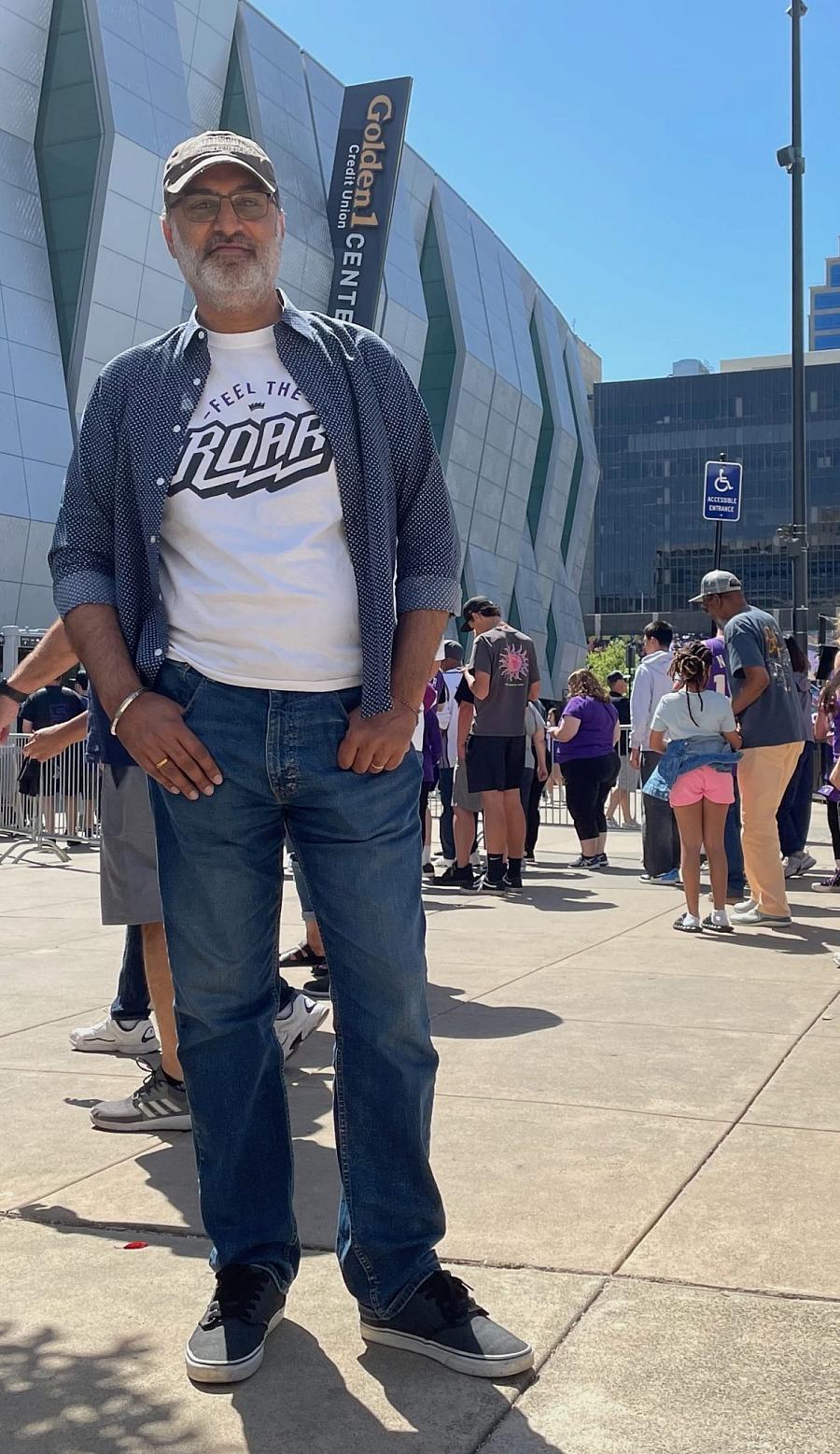
Personal injury attorney and activist Amar Shergill was integral in the gurdwara’s battle to keep ICE off premises.
Photo by Tanay Gokhale.
The court filing noted that allowing federal immigration officers inside places of worship “had an immediate chilling effect on worship and fellowship. Members of the sangat are now concerned that participation in Sikh religious life at the Gurdwara may put them at risk.”
The gurdwara draws between 4000 and 5000 Sikhs on average Sunday, and up to 20,000 on a festival or a day of celebration. Shergill recalls having multiple conversations with sangat members who told him that they would not be attending for fear of being targeted by immigration authorities.
“It’s not just the people that cannot go because of the threat of arrest or the threat of harassment,” he said. “The people that attend are also harmed because they are prevented from being in sangat with other Sikhs. It’s a denial of their practice, right?”
Others raised concerns about preserving sacred religious decorum within the main prayer hall of the gurdwara. According to the tenets of Sikhism, every member of the sangat must take off their shoes and cover their heads before they enter the main prayer hall. With the exception of the kirpan — a ceremonial dagger worn by Sikhs as an article of faith — no weapons are allowed inside either.
“We don’t want people going in with shoes on, with guns on their body as that is against our religious system,” said Thandi, the former Amtrak driver. “Believe it or not, I voted for Trump. I think he’s a good president, but his policy of ICE going to the premises of any religious place, I’m against.”
A Health Resource Hub
For many Sikhs, especially first-generation immigrants, the gurdwara is also an important source of vital health resources. Every day, the West Sacramento gurdwara runs a community kitchen or langar, where volunteers cook and serve vegetarian, culturally congruent meals to all visitors — Sikh or not — free-of-charge.
The gurdwara also facilitates free health screenings for the sangat once or twice a month in coordination with the UC Davis chapter of the Bhagat Puran Singh Health Initiative (BPSHI). BPSHI is a volunteer-run initiative through which Sikh medical students across universities in California fulfill health needs in the Sikh community. They draw inspiration from Bhagat Puran Singh, a 20th century Sikh humanitarian. Over the past two years, the team has conducted about 20 health clinics at the West Sacramento gurdwara, checking blood sugar levels and blood pressure for up to 80 patients every time.
In an email interview, the UC Davis chapter of the BPSHI said that diabetes and hypertension are widespread issues among the Sikh population — as well as the wider South Asian population — and regular monitoring is critical. But there are few avenues for screening in the community, and many do not completely understand the high risks associated with these chronic diseases.
“From what we have seen, the elderly population tends to have higher blood glucose levels so it’s important for them to manage it,” said the BPSHI team. “Also those that have newly migrated and do not have health insurance yet, it’s important that they can get their basic vitals checked.”
Among first-generation immigrants, many belong to lower-income groups and work two, sometimes three shifts as farm workers, truck drivers, or corner store attendants to make ends meet. This lifestyle takes a toll on their health, but leaves little time and money to seek professional medical help.
The language barrier is another obstacle to accessing healthcare through conventional means. Many first-generation immigrants are fluent in their native Punjabi, but not in English, making it difficult to communicate health needs and understand doctors’ orders. Navigating the labyrinthine network of hospitals, diagnostic labs, and insurance companies in the American healthcare system is an intimidating experience that is very different from their experience accessing healthcare in India.
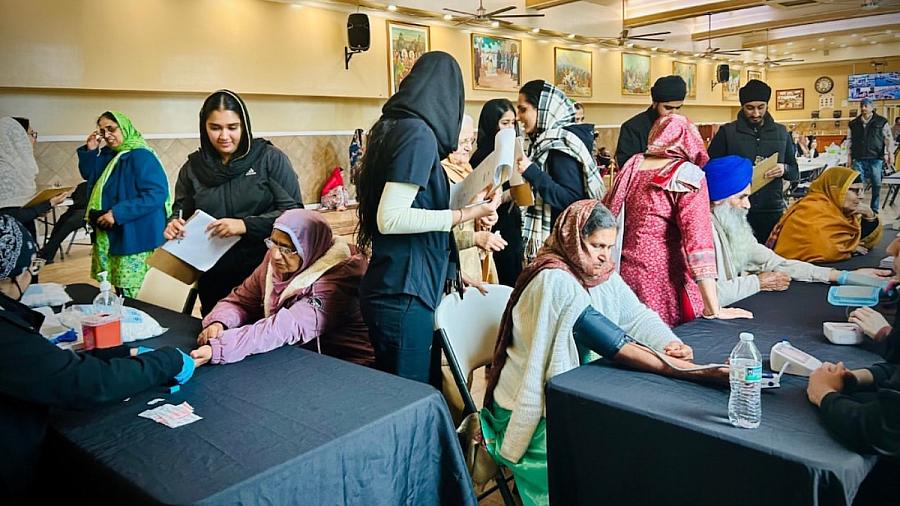
The BPSHI UC Davis chapter conducting a free health screening at the Yuba City gurdwara.
Image credit: BPSHI – UC Davis.
K. Singh, a Washington-based businessman who visits the West Sacramento gurdwara whenever he is in town, said that the gurdwara is one of the few culturally competent resources for Sikhs to access healthcare, especially screening vitals.
“I own a business in the service industry and I see that a lot of Sikhs in my industry suffer because early detection of diabetes and hypertension is not happening. Anxiety, job uncertainty, financial hardships, relationship trouble, compounds this issue further.”
“I check my vitals every time I see a clinic set up here,” said Harminder Singh, a sangat member who moved to Sacramento ten years ago from Italy with his family. His family is eligible for free healthcare through Medi-Cal, but he was skeptical of the quality of care it would offer. Even with paid healthcare, he prefers to get his vitals checked at the gurdwara because it is more convenient than driving to a medical clinic, filling out paperwork, and interacting with a doctor in a foreign language.
A Pillar Of Mental Health Support
“I remember when I came over [to the United States] myself in 1984, I cried every night. I was in this new country, but I had no friends, and no family,” recalls Thandi. “There’s only one way you can survive — you come to the gurdwara. It gives you power.”
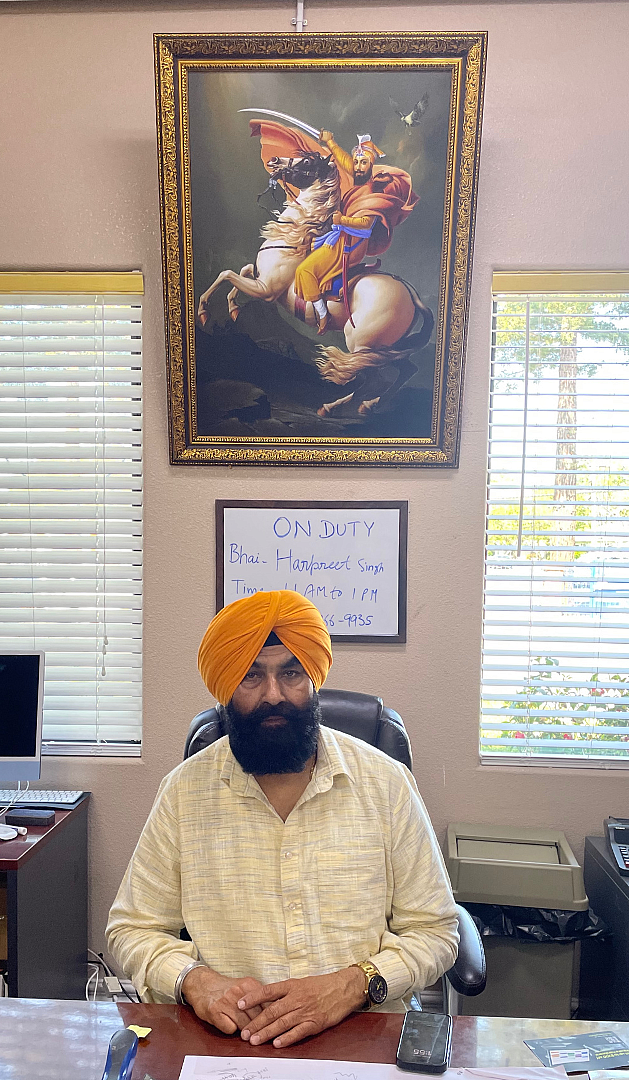
Narinder Singh Thandi follows the example of guru Gobind Singh (in picture above him) in his duties towards the gurdwara.
Photo by Tanay Gokhale.
Especially among first-generation immigrants within the Sikh community, the gurdwara is often the first point of contact for newcomers to seek out Punjabi-speakers, culture, and fellowship. As a result, it becomes a de facto resource to address mental health challenges like depression, and anxiety.
“Mental health is one of the biggest challenges because people are not willing to share their problems openly,” said Puneet Kaur Gill, a member of the sangat who visits the gurdwara up to three times a week with her family. She volunteers at the gurdwara during langar service, and teaches Punjabi language to children through the charter school on its premises.
Another member of the sangat who is a truck driver wished to remain anonymous but said that coming to the gurdwara and speaking to others in Punjabi was essential to his mental health.
“I know someone else who suffers from depression — it can get very lonely on the job — and I keep telling him that he should come to the gurdwara. I think if he comes [to the gurdwara] and speaks to other Sikhs, it’ll help with his mental state.”
Shergill said that he has conversations with recently immigrated Sikh students attending schools like UC Davis and Sac State, and undocumented immigrants who work in nearby corner stores or stop by on their trucking routes.
“Inevitably, during that conversation, they say, ‘I am here today because it feels like home when I come to the gurdwara’,” he said. “Particularly when they’re undocumented, particularly when the world feels hostile to them, the gurdwara emerges as a sanctuary for all people to come anytime.”
The Way Ahead
Thandi and Shergill are both cautiously optimistic that the injunction will deter any ICE activity on the premises of the West Sacramento gurdwara. But when the case goes to trial, Shergill is wary of a ruling in favor of the administration, especially if it ends up in the Supreme Court.
“That said, places of worship have better reasons to be optimistic than other places. We’ve been successful in conservative courts of all types of composition, even when other First Amendment issues have not been, because whether you’re conservative or liberal, you understand the importance of places of worship, and their need to have special treatment,” he said.
Meanwhile, the gurdwara plans to step up its capacity to provide essential health services; on Thandi’s wishlist is a permanent medical center staffed by a doctor, and a private screening room for patients who want more privacy during their visits. Plans are also underway for a senior center on the premises, but the project will take a few years to complete.
Thandi said that the gurdwara will continue organizing festivals and larger events to commemorate the lives of the ten Sikh gurus, who established a faith that emphasizes equality, community service, and devotion to the one true God, irrespective of faith.
“It is an act of defiance of normal social structures that any person of any faith, any caste, any profession, any geography, not only has the opportunity to sit down with others, but is encouraged to sit down with others in the same space, so that you can build society and understand the equality of all people,” said Shergill. “It’s a sad day when any member of the sangat decides that they cannot attend the gurdwara. That’s the antithesis of the existence of the gurdwara.”


